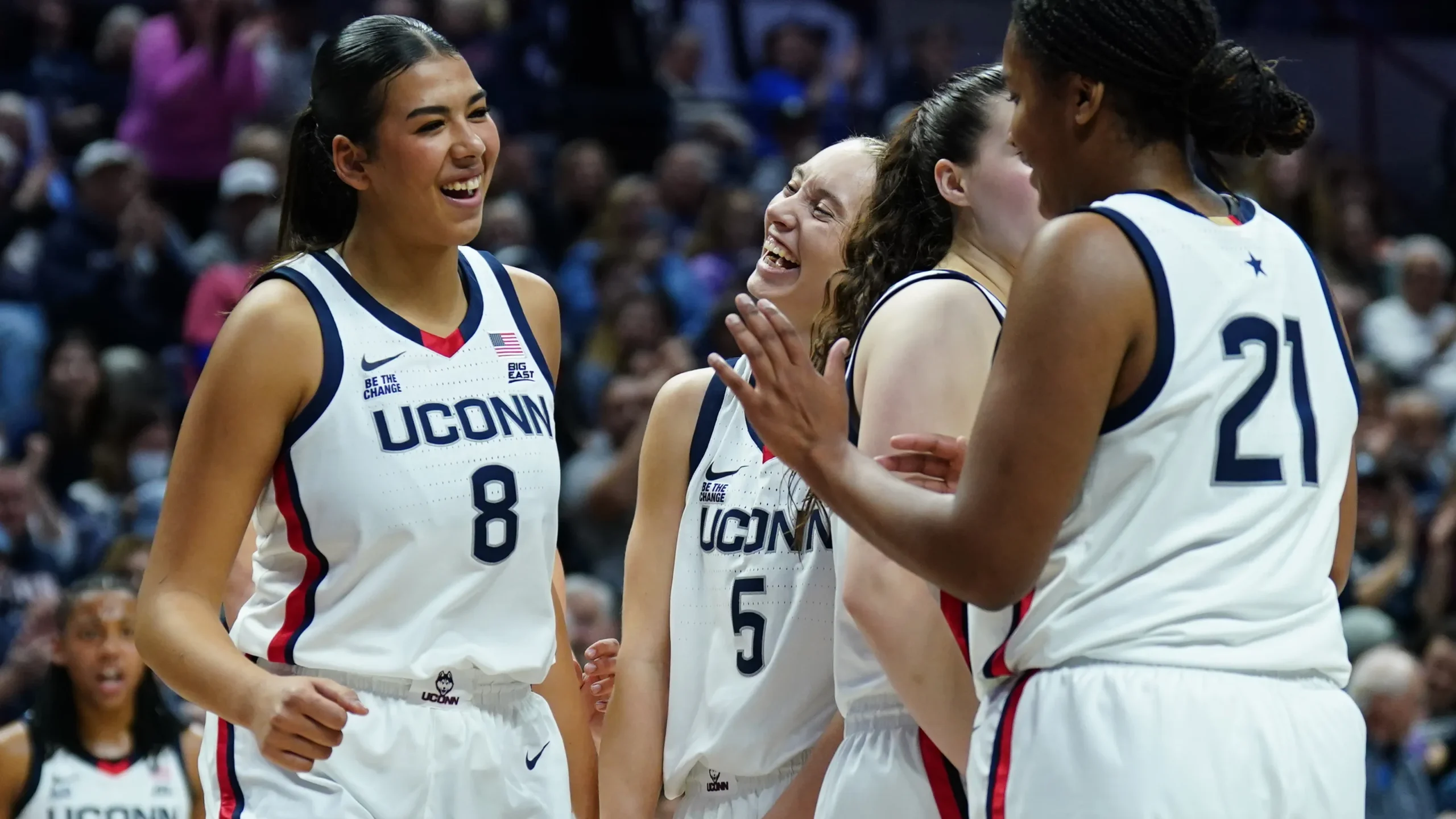In a significant shift in the landscape of women’s college basketball, UCLA has surpassed Connecticut to claim the No. 1 spot in the latest rankings, making a statement about the changing tides in the sport. The UCLA Bruins, who have long been a powerhouse in women’s basketball, are now sitting atop the rankings, a position that has traditionally been held by Connecticut’s Huskies. This marks a historic moment in the sport and offers a glimpse into the evolving dynamics of women’s college basketball.
The UCLA Bruins’ rise to the top of the rankings is more than just a reflection of their current form—it is a testament to the hard work, dedication, and talent that has been put into building a team capable of challenging the long-standing dominance of programs like Connecticut. For fans, players, and coaches alike, this shift represents the competitive nature and unpredictability of the women’s game. Here, we’ll dive into the significance of this change, the teams involved, and what it means for the future of women’s college basketball.
UCLA’s Journey to No. 1
UCLA’s ascent to the No. 1 ranking in women’s college basketball has been a well-earned achievement. While the Bruins have been a formidable team in recent years, their ability to pass Connecticut—one of the most successful programs in the history of the sport—marks a new chapter in the program’s history.
The Bruins have had an impressive run in the past few seasons under head coach Cori Close, consistently competing at a high level in the Pac-12 conference and in the NCAA tournament. Their rise can be attributed to a mix of factors, including a strong recruiting class, effective coaching, and a well-balanced team. Key players have stepped up to fill leadership roles and have helped push the team to new heights.
UCLA’s success this season has been driven by a blend of experienced upperclassmen and talented underclassmen. Senior guard/forward Charisma Osborne, one of the team’s most dynamic players, has been instrumental in the Bruins’ success, providing both leadership and scoring ability. Additionally, the team’s overall depth, defensive intensity, and offensive efficiency have helped them remain one of the best in the nation.
The Bruins’ win streaks, dominant performances against ranked teams, and overall consistency have solidified their spot at the top of the rankings. Their high-octane offense and tough defense have been key in overcoming tough opponents, which has earned them the respect and admiration of the basketball community.
Connecticut: A Storied Program Faces New Competition
For nearly two decades, Connecticut’s women’s basketball program has been the gold standard in the NCAA. Under legendary head coach Geno Auriemma, the Huskies have accumulated numerous championships, Final Four appearances, and a legacy of dominance that has made them a household name in the sport. However, the rise of programs like UCLA, South Carolina, and Stanford in recent years has led to a more competitive landscape, and for the first time in many years, Connecticut is no longer at the top of the rankings.
While Connecticut remains one of the most successful programs in women’s basketball history, the team has faced challenges in recent seasons. Injuries, roster turnover, and the emergence of new contenders have made it harder for the Huskies to maintain their position at No. 1. Despite this, the Huskies continue to be a force in women’s basketball and are still considered one of the top programs in the country.
This season, Connecticut has had some impressive wins but also some notable losses. The team’s depth has been affected by injuries to key players, and the younger players on the roster have had to adjust to the rigors of competing at the highest level. Nevertheless, Geno Auriemma’s ability to develop talent and prepare his team for the postseason is undeniable. The Huskies are expected to be a serious contender come tournament time, and this ranking shift does not diminish their overall program strength or legacy.
The Competitive Nature of Women’s College Basketball
The rise of UCLA to the No. 1 spot is indicative of the increasing parity in women’s college basketball. Historically, programs like Connecticut, Tennessee, and Stanford have dominated the rankings, but more recently, new teams have emerged as legitimate title contenders.
Programs like South Carolina, Stanford, and now UCLA are proving that women’s college basketball is not a one-horse race. This is a sign of the sport’s continued growth and evolution, where more teams have the resources, talent, and coaching to compete at the highest level. As more recruits choose schools based on factors beyond just historic success—such as style of play, coaching philosophy, and player development—the landscape of women’s college basketball is becoming more dynamic.
UCLA’s rise to No. 1 also reflects the increased attention the women’s game is receiving. From TV broadcasts to social media platforms, the visibility of women’s basketball is at an all-time high, attracting new fans and creating a larger platform for players to showcase their skills. This growing interest in women’s sports is a critical element in the increased competitiveness of the game.
What This Means for the Future of Women’s College Basketball
UCLA’s ascension to the top of the rankings may just be the beginning of a new era in women’s college basketball. As the Bruins continue to build on their success, they will likely face increased pressure to maintain their position at No. 1, especially with programs like Connecticut and South Carolina poised to make a push for the top spot.
One key takeaway from this shift is the impact of strong leadership and player development. Cori Close’s ability to mold her team and develop talent has been instrumental in UCLA’s success. As more programs follow suit, women’s basketball could see more turnover at the top of the rankings, making the sport even more exciting for fans.
Moreover, the competition for No. 1 will likely intensify as other teams build their programs, recruit top talent, and develop their own identities on the court. The growing competitiveness of the sport will lead to better games, more exciting matchups, and ultimately, a more unpredictable NCAA tournament.
Conclusion
UCLA’s rise to the top of the women’s college basketball rankings is a defining moment in the sport. It not only marks a changing of the guard as the Bruins overtake Connecticut for No. 1 but also reflects the broader growth and evolution of women’s college basketball. As the competition intensifies and more programs continue to rise, the future of the game looks bright. UCLA’s triumph is just one example of how parity and competitiveness are reshaping the landscape of women’s sports, promising exciting years ahead for fans and players alike.













